LIVE NOW!
Zeit² - intervista agli sviluppatori

In vista dell'arrivo su Live Arcade dello sparatutto a scorrimento Zeit², Xbox Community Network ci ha fornito una intervista - in inglese - a Thomas Bedenk, game designer di Brightside Games, autori del gioco. Se siete interessati a questo particolarissimo gioco e non avete problemi nella comprensione dell'inglese, ve la proponiamo di seguito.
(1) Tell us a bit about the history of Zeit² leading up to the IGC.
In 2008 Zeit² started as a student project. Part of our team took a game programming class at the Technische Universität, Berlin, Germany. After finishing the first version of our game we had quite some fun playing it and our lecturer Andy Nealen (now teaching at Rutgers University, New York and co-developer of the award winning game Osmos) encouraged us to submit it to Microsoft’s Dream Build Play 2008 competition. We were a finalist placing in the top 20 out of 350 submissions.
This initial success encouraged us to put some more features in the game and take part in the IGF 2009. We were selected for the Independent Games Festival Student Showcase, which allowed us to visit the Game Developer Conference in San Francisco and show our game on the show floor at the IGF booth. It was a very exciting time for us to meet other game developers and even let them play our game right there. The nomination brought with it some media reports and first emails from publishers interested in our game. That is when we decided to take the project to the next level and founded our company Brightside Games.
It took another year of refining the prototype and pitch material until we entered another competition. Being in the Indie Game Challenge 2010 Final allowed us to attend the D.I.C.E. conference and pitch our game to publishers. We knew we wanted to bring our game to XBLA since we thought it was the perfect platform for Zeit², so we needed a publisher to make that possible. When we showed our game to Ubisoft they liked it so much that they offered to work with us right away.
(2) Where did the original concept of Zeit² come from?
In order to sign up for the game programming class at our university, everyone was required to create a 3-day prototype of a game. That was when I created the very first version of Zeit². At first I wanted to create a shoot ’em up game where you could switch between horizontal scrolling side view and horizontal scrolling top view. You could then only shoot an enemy in either perspective. Then I thought what if you could only kill an enemy by shooting at it in both perspectives at the same time? For that to be possible you need to somehow duplicate your ship. Since the player would only be able to control one ship at a time, I came up with the time traveling. The player has the power to rewind time and play the same part of the level again while his former actions are being re-played by a second instance of the ship. That way, while time traveling takes place, you can interact with a copy of yourself. Then I figured it would be too confusing to have the perspective shift and the time traveling so I decided to only implement time traveling in order to keep the game intuitive.
(3) It’s an interesting combination of two quite different archetypes; Zeit² has Shmup bones but the time mechanic has closer relatives in Are there any games in particular you took inspiration from?
Games like Ikaruga, Gradius and Flow inspired me to create the initial concept of Zeit². During further development, Mega Man and Warning Forever had an impact on how boss fights and weapon unlocking works. I love the variety of modes in Geometry Wars: Retro Evolved 2. It really motivated us to implement additional game modes in Zeit² that actually play differently. Playing Tactics mode is a very unique and different experience for example that adds a puzzle element to Zeit². Wave mode is a very fast paced mode that entirely focuses on high scores and there is much more to discover in the final game. We also took inspiration from Geometry Wars and Shadow Complex to take the leaderboards and achievement integration to the next level. We have 70 challenges in the game that work similar to achievements, but also make you beat your friends’ current scores.
(4) We looked up “Zeit” and found out it means “time” in German. So… Time *squared*, which is both an amusing pun and a reference to the game’s time mechanic! Can you tell us a bit about the time mechanic?
The biggest innovation in Zeit² is how time traveling works. When you go back in time at first it is like rewinding a video tape, but when the game starts playing forward again, a black copy of your ship plays exactly like you did before going back in time. While this ghost replays your former actions you can play a second copy of your ship. This way you can be at two spots at the same time and have twice the firepower. You can even interact with your own prior playing by shooting at your copy which releases special shots. Time traveling seems complicated when you explain it, but it becomes second nature when playing the game. We had a lot of ideas around the time traveling that didn’t make it into the game, because we wanted to make the game as straight forward as possible. For the experience as a whole it meant to focus on the main mechanics and create a lot of iterations in order to fine tune the feel of Zeit².
(5) We’ve also heard that health and ammo are the same thing. How does that work? Is there a particular reason you chose that mechanic?
Your ship is basically an energy sphere. Its size indicates how much energy you have left. You can overload your energy up to 200% which makes you quite huge. Shooting in deed takes a tiny part of the energy away from you, but as soon as you destroy an enemy you get energy back. Also when enemies pass you they can drain energy from you. This adds a very interesting energy balance system to the game. You don’t die being hit once and often you can successfully manoeuvre yourself out of very dangerous situations which feel really great. It gives the game kind of a different flow. Most importantly, however, the mechanic is important to make you go back in time more frequently. If you destroy enemies at the top of the screen and let an enemy pass at the bottom it drains energy from you. Then you can go back in time and take care of the bottom one and regain that energy. It’s really important to think ahead in Zeit² but there is plenty of room to keep your finger on the fire button and blast away tons of enemies.
(6) What about the audio – was that produced in house? How important to this kind of game do you think audio is – do you consider the audio cues and pacing a vital part of the experience?
We had two very talented artists creating the sound effects and music for Zeit². Lars Fischer was responsible for all the audio we had in our prototype. Bastian Kieslinger created the very catchy tunes we have in the final version. We wanted the main theme to be recognizable throughout different variations. The music is slightly altered when you go back in time. When you speed up time we don’t play the music twice as fast but add beats and make it more dynamic. All those variations seamlessly fade and are also integrated with the sound effects for traveling in time. The spectrum of explosions and shooting sound effects has nice variations and combine into an audio-visual experience. Sound effects however are also vital to game feedback. Specific sounds let you know when your special weapon is ready or when you are in danger. A tougher and faster music track pushes your adrenalin level during boss fights.
(7) In the same vein, the visuals are in the Shmup tradition while retaining a style and HD gloss of their own. More than anything it puts us in mind of Geometry Wars – do you think that’s a fair comparison? Was the art style decided from the start or has it evolved over development?
We went for a very abstracted, stylized and clean look for Zeit². We felt that it fits the theme and we wanted something more unique than your usual spaceship visuals. Also a big part in our decision was usability reasons, meaning how easy it is to play the game and keep track of everything. I believe that was also the case with Geometry Wars. With more than 50 enemies on one screen in later levels we wanted to make it as easy as possible to distinct between player, background, shots and enemies. It is very important to always see what your time travel shadow is doing. We use pure red when you are hit or you hit an enemy. When you go back in time and are not in control, everything is black and white. Enemies and enemy shots are always the same colour while their shape and size varies. We made the decision to make the visuals as monochrome and stylized as possible. While some players might usually prefer more realistic graphics, for us the most important factor was how the game feels and plays. We think while being very simplistic Zeit² has a really polished and coherent style of its own.
(8) It’s an interesting time for indie developers, with XBLA providing a great way to reach a type of gamer who is perhaps difficult to reach for the average small studio. Do you think the landscape has changed for the better? What kind of future do you see for indie devs in general, and Brightside Games in particular?
I think it is an awesome time to be an indie developer. There are more indie competitions, more support and more media coverage than ever before for developers like us. I remember the public domain culture on the Atari ST and Amiga 500 computers and the freeware and shareware in the early days of the internet. I actually developed some little games back in 1997, but the possibilities that technologies like XNA Game Studio, UDK and Unity give you today are incredible. It has never been so easy to publish a game on major platforms like the iPhone or the Xbox 360. The indie game channel on the Xbox 360 is a revolutionary instalment of Microsoft. You can find game pearls like radiangames Crossfire 2 and Xona games Decimation X, but it is still hard to reach a broad audience. A lot of Xbox 360 owners just still don’t know what great games you can find on XBLIG. The iPhone market is so incredibly crowded that it’s hard to be noticed at all. Osmos from hemisphere games is a great example of how a quality game from a very small developer team can still shine through the masses. We are very happy that after our long journey of developing Zeit² it worked out to bring our game to XBLA and that big players like Ubisoft aresupportive and aware of the indie movement. We as Brightside Games are very much looking forward to bringing more games to the players out there, that are striving for innovative games and supporting indie developers like us. You can always find more information about our team and development on blog.brightside-games.com.
(9) Do you have any plans for DLC? If not, is it something you’d ever consider?
There are currently no plans for DLC for Zeit². We tried to pack everything we have got into Zeit² to give you the full experience right from the start. There are 20 levels in Arcade mode, 8 boss fights, 12 levels in Wave mode, 15 levels in Tactics and even more to explore in Survival, Time Limit and Score Attack mode. On top you get the tutorial, great leaderboard integration and 70 unique challenges to master.
(10) Now that you’re at the end of the development cycle, what do you look back on as the hardest part of it? Is there anything you’d do differently?
We learned so much since we started developing Zeit². There were so many aspects that are directly connected with game development, but also so much on top of that like founding and administrating a business. There were times where we worked around the clock and there was a whole year of development where we didn’t earn a cent for what we were doing. We didn’t even know if we would ever find a way to release the game, so it took a lot of effort and a lot of motivation. Of course you make better and worse decisions, but we wouldn’t want to change anything. We started with a dream to make this game and have people play it, but who would have thought we can actually bring it to XBLA? For everyone who would like to make a video game, my best advice is to not dream about it but sit down and make it happen. It’s not magic you just have to be open to learn and be motivated.
Thanks for your time!
 Offerte in evidenza
Offerte in evidenza
-
€ 24.99 invece di 71.00
-
€ 36.90 invece di 81.99
-
€ 35.51 invece di 74.99
-
€ 39.98 invece di 79.99
-
€ 29.99 invece di 49.99
-
€ 49.99 invece di 79.99
-
€ 18.87 invece di 29.33
-
€ 34.99 invece di 53.99
-
€ 30.99 invece di 40.99
-
€ 62.99 invece di 79.99




 Offerte in evidenza
Offerte in evidenza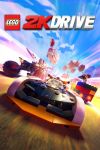

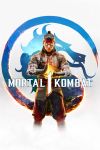

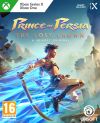

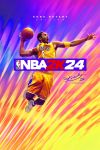


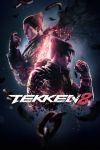


Commenti